We ride through the wave train at a speed of 25 kilometres per hour and for a split second, we are terrified. But, wait, we are not in our canoe, alone on this remote and sometimes-treacherous glacial river. We are in a stable and forgiving expedition raft, on a 12-day Alsek River journey organized and executed by the experts, Canadian River Expeditions. We can relax, enjoy the ride, and savour the striking scenery. Our 15-year-old grandson Nathan has come with us, adding to the fun, energy, and memory-making of this wilderness experience.

The wow factor
Wow – scenic overdose! Big water, big mountains. Glaciers and grizzlies. Icebergs and eagles. “You can’t be unhappy in the middle of a big, beautiful river,” said writer Jim Harrison, and this adage certainly applies to the Alsek. We gawk at an incredible, ever-changing landscape of towering mountains, active glaciers, broad valleys, ancient lava flows, strange rock formations, dunes, iceberg-dotted lakes, narrow canyons, broad braided channels, lush young forests, wildflowers in pink, blue, and purple, and countless waterfalls.
Alsek weather is extreme, and it changes just as dramatically as the scenery. We may start the day in short sleeves under our coated rain suits, but keep those layers handy! An hour later we bundle into seven layers of technical clothing to warm up, then an hour later it’s back to short sleeves again. Approaching a swift-water section? Change once more, into your dry suit; the water temperature here averages one degree above freezing, so if you flip, you freeze—dry suits are mandatory when there is significant capsize risk. And, oh, hang on to your hat! Winds up to 100 km/h are not uncommon, sometimes producing sandstorms of glacial dust.
The Alsek travels through pristine, remote wilderness, but that doesn’t mean it is silent. Creak, crack, boom, splash, smash! Thunder? A distant shotgun? No, it’s a glacier calving icebergs into the lake, a floating iceberg flipping over, or the start of a rock slide, which turns a waterfall from white to brown before your eyes. The river itself is noisy; the Alsek is in a hurry, and the silt and rocks it carries grate against the bottom of the raft.
Turnback Canyon, a four-mile stretch of treacherous whitewater, is the most famous section of the Alsek River. The canyon is too tight and turbulent for a raft, so a helicopter provides a portage – and a bird’s-eye view of the canyon and surrounding peaks and glaciers.
On the edge of the Ice Age
An expedition down the Alsek River is like stepping back in time to an Ice Age environment.
It’s a privilege to see these active glaciers – while we can. The glaciers are going, and guide Jeff gives us a first-hand account of climate change. Jeff shows us where he walked on Walker Glacier as a teenager, just a decade or two ago. Because of climate change, the glacier has retreated. It’s unstable and no longer safe to walk there, so today the river guides call it No-Walk Glacier.
We contemplate our personal contribution to glacial melt. Yes, we have gone car-free, but we did fly from Vancouver to Whitehorse in a jet plane. Riding our bikes, hitch-hiking, or taking the bus would have been less damaging to the environment.
The Ice Age is ending, but it’s not all bad news. In fact, the Alsek and the Tashenshini, just one valley over, are an environmental success story. In the 1980s a major mining operation was proposed near the confluence of these two magnificent rivers. The massive environmental risk triggered international protests by conservationists and politicians. Today, the Alsek flows through three contiguous parks: Kluane National Park in the Yukon, Tatshenshini-Alsek Provincial Park in British Columbia, and Glacier Bay National Park in Alaska. Collectively these parks are part of a UNESCO World Heritage Site. The Alsek and the Tatshishini are the only major river drainages in North America to be completely protected from source to sea.

Camping on the river
We love camping. Making and breaking camp provide a pleasant structure and rhythm to each day, and aren’t we lucky? Not once did we pitch or take down our tents in the rain.
Canoes are capacious, but rafts hold even more camping luxuries, such as folding tables, chairs, huge coolers, and cooking equipment. Our guides do all the cooking, with menu items that go way beyond our usual GORP and KD: eggs benedict, arctic char, and poached pears. Greek night has too many vegetables, according to Nathan, but any calorie deficit that night is replenished at other meals, such as when he eats one-half a Dutch oven of lasagne, two large grilled elk-dogs, or seven s’mores.
Grizzlies and ground squirrels
Yip, yip, yip! Bear in camp! At six am Gary and Karen spot a big grizzly walking behind our camp. The guides spring into action. Eventually, on his own time, the bear leaves and swims across the river. Everyone is up now – except Nathan. It is a layover day, and after several days of 5 am starts, Mike has promised we can sleep until brunch.

Electric fence 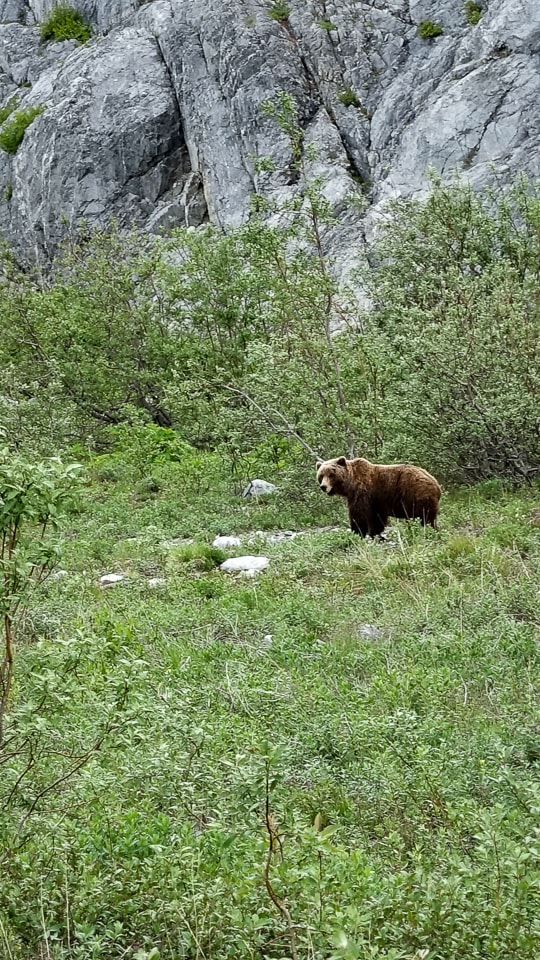

Tracks 
A second grizzly comes along, and this one is not as easily deterred. Turns out we are camped next to a bear runway, with Nathan’s tent being the closest to it. “Do I have to get up?” groans Nathan, when Grandpa tries to wake him. We let Nathan sleep, and later Karen shows him the photos. All is not lost in terms of wildlife encounters. We see two more bears and a distant moose, but Nathan is more impressed by the courageous bald eagles and the cheeky ground squirrels.
Sharing the experience
Our expedition is comprised of four rafts and sixteen people: four guides and twelve guests.
The guides are highly qualified, strong, hard-working, engaging, and kind. Mike is our leader, safety-conscious and professional. He gives the two daily talks (Map Talk in the morning, Tomorrow Talk at supper); “best day ever” is his favourite saying. Jake says he’s an avionics systems engineer, but we say he’s a born teacher. Jake can patiently and clearly explain anything, whether it’s how to read the river, how the helicopter works, or how to wash the dishes. Eric is a bold and enthusiastic Australian. Eric gets very excited by water features, especially those that would be fun in a whitewater kayak. If Eric is wearing long pants and a sweater, you know it is cold! Ursula’s love for rivers began with canoe-tripping in northern Ontario, one of our favourite paddling places. Urs is the group’s best baker; her sweet and savoury breakfast rolls must be mentioned. At Turnback Canyon, Ursula leaves to guide another trip, and Jeff comes in to replace her. Jeff is a fount of knowledge. Credentials? Born and raised in the Yukon, Jeff is a geography professor, with expertise in climate change and sustainability.
Doug (age 77) and Nathan (15) are the oldest and youngest of the twelve guests. What kind of people go on rafting trips? Interesting, well-travelled, cheerful, team-oriented, outdoorsy people and Nathan learns from them all. Ruedi tells stories and knows nearly two thousand knots, Neil enjoys intellectual discussions, Brad offers stone-skipping tips, Gary is a frisbee player, Sue investigates Nathan’s skin rash, and guess what? Like Nathan, Michele plays piano and violin. Our group includes a lot of canoe-trippers. Like us, they choose this rafting trip because, although some extreme kayakers have survived the Alsek, attempting it in an open canoe would be very unwise.
Logistics
The Alsek expedition starts from Serpentine Creek in Kluane National Park, Yukon. The river crosses the southwest corner of the Yukon Territory, flows through a narrow section of British Columbia, and then moves across the Alaskan panhandle, ending in Dry Bay near the Pacific Ocean. The journey is about 250 kilometres (150 miles) as the river drops 555 metres (1800 feet). At the fish packing plant in Dry Bay rafters are picked up by a small plane and flown back to Whitehorse. Passports are required.
Alsek rafting is considered a beginner trip, with no exceptional physical requirements. You must be able to crawl in and out of a tent, carry your dry bags and some group gear, and walk over rocky, uneven ground. Attitude is the key. Are you a flexible person, a good group citizen with a spirit of adventure? If so, you will enjoy this trip. Being an early riser would be an asset.
We are pleased to recommend our trip provider, Canadian River Expeditions/Nahanni River Adventures. Considering the high cost, these trips are surprisingly popular, so book early. For your flight to Whitehorse, we suggest Yukon’s airline, Air North. Friendly and old-school, Air North is the “best airline you’ve never heard of,” and they now offer service to/from Victoria.
Welcome to Whitehorse
Whitehorse is a lively town, and we have no problem finding ways to enjoy ourselves on the days before and after the Alsek expedition. The SS Klondike, a paddle-steamer restored to its heyday, is our first stop. On board, we learn about this luxurious sternwheeler and the region’s Gold Rush history.
You can’t visit the Yukon without canoeing on the Yukon River. Twenty years ago we paddled from Whitehorse to Dawson City (736 km), and we would like Nathan to have a taste of this truly Canadian experience. It is cold and raining hard, and at one point it’s actually an icy sleet, but we go anyway. We have signed up for a day-trip on the Yukon River with a company called Kanoe People, and we don’t want to miss it.
Nathan sterns a canoe with our animated guide Ali, a grade six teacher, in the bow. We are in another canoe, and Keegan, a shadow guide, comes along in a solo kayak. We paddle 24 km from downtown Whitehorse to the Takhini Bridge, where the Takhini River meets the Yukon. We stop at Whistlestop Bend for lunch, then take some back channels and walk to an eagle’s nest. The original plan is to go further, to Policeman’s Point at the entrance to Lake Laberge, but we are soaked and have achieved a sufficient suffer score. Our kind driver brings us hot chocolates from Tim Horton’s. Nathan learns about GORP and cold rain, and his black toque is his new best friend.

Dogs – 137 of them – are barking loudly when we arrive at Muktuk Adventures, where are to be Rookies-for-a-Day. Naomi puts us to work, moving dogs from their individual dog houses to their assigned exercise yards. The dogs like people, but they don’t always like each other, so it’s all about the politics. We water the dogs, take the puppies for a run to the Takhini River, then start brushing the cooperative ones. After a lunch of elk sausage, candied salmon, and bison burgers, Jeff gives a talk about the dogs and the Yukon Quest. These dogs are mostly a hybrid breed called Alaskan Huskies, canine athletes bred for endurance. They can run seven to nine miles per hour, day after day. Some can run two 1,000-mile races back to back.
Back downtown, Nathan contributes to the art scene by delivering a piano concert across the street from the Whitehorse and Yukon Railway Station. “You play well, son,” says the street musician who plays his wind instruments at the other end of the block.




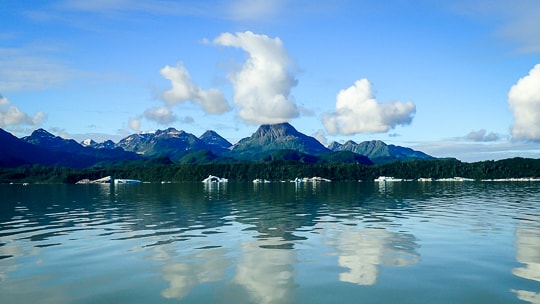

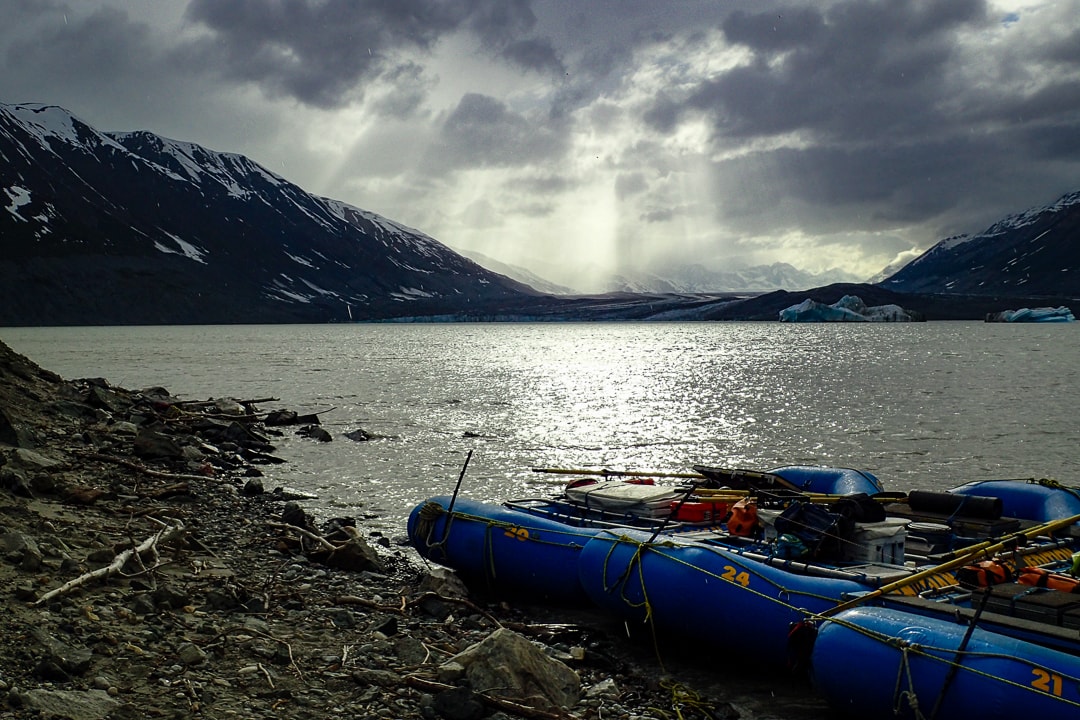

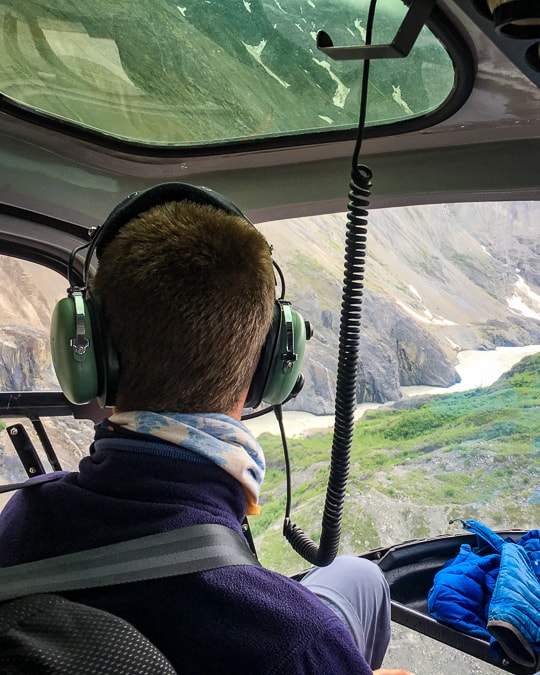
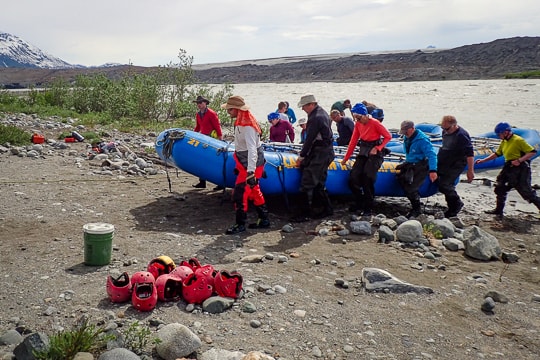
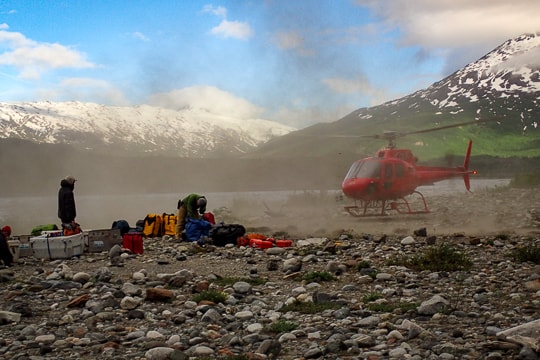
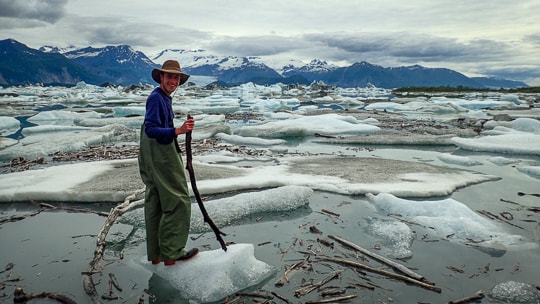




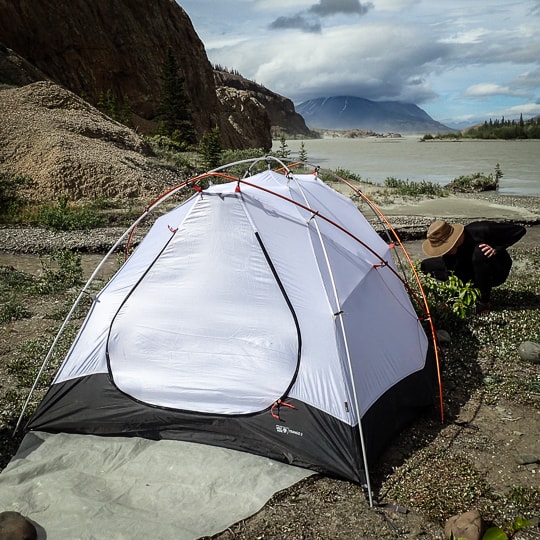
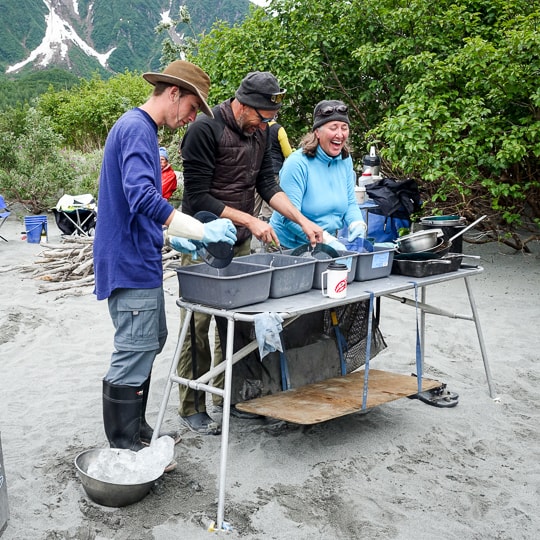


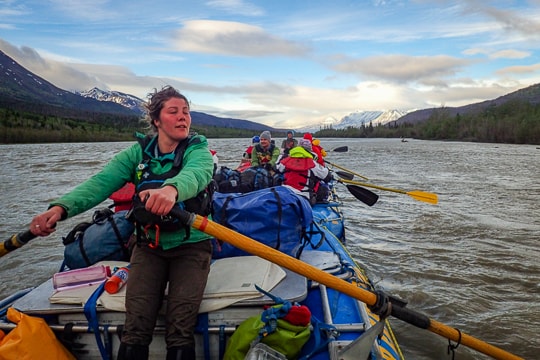


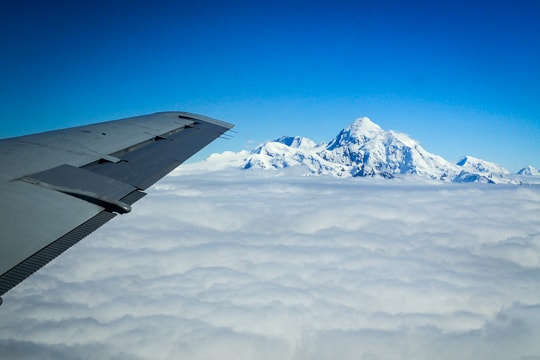

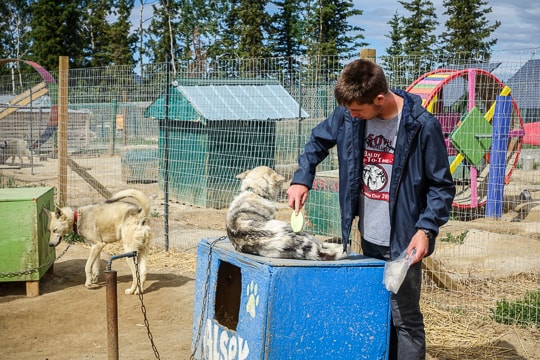
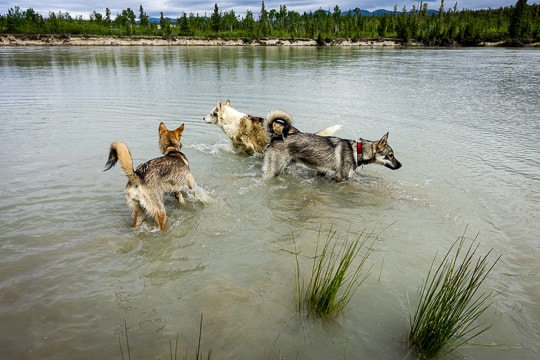
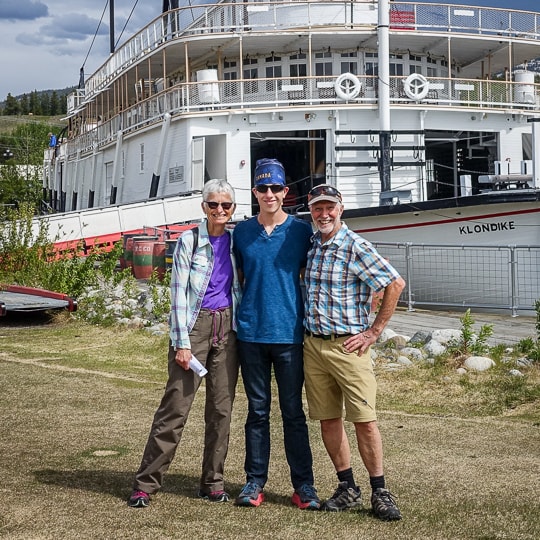

Thank you Cathy and Doug for a wonderful account. This trip is now on my Bucket list! What a great adventure. You are an inspiration to those of us in a similar age bracket! Shaun
LikeLike
Thank you, Shaun, for your comments. It truly was the experience of a lifetime.
LikeLike
Once again, a fabulous travelogue and spectacular photos! How fortunate for Nathan to have such active and adventurous grandparents. Thanks for sharing.
LikeLike
When Nathan posted a few of the photos on his Instagram, he commented it was his “best experience ever”. Quite something for a 15-year-old to verbalize.
LikeLiked by 1 person
Utterly inspirational! Well done Doug and Cathy, I’m 100% envious of your adventures.
Liz
LikeLike
That’s quite a compliment, Liz, considering all the exotic and demanding adventures you undertake. Thanks!
LikeLike
Another fabulous adventure for you, Doug and Cathy. Great that you’re sharing all these experiences with your grandchildren. You certainly were more active on your northern trip than I was!
LikeLike
We have attempted to expose our grandkids to outdoor adventures even if they don’t carry through into their adult life; then it’s over to them. Sorry we missed you in Whitehorse.
LikeLike
Fantastic report. I check on photos for quality by zooming up on them and they are great there. I should head north someday.
George
LikeLike
Thanks, George. That’s interesting about the resolution. After I adjust the photos using Lightroom, I upload them to Google photos using their free “lower quality” option. I then select the G photos images to insert into the blog. WordPress has a direct link to G photos. Glad to see they don’t lose too much.
Better not wait too long before heading N; the Arctic is disappearing fast.
LikeLike
Thanks Doug, Cathy and Nathan for the awesome pics. It truly was a trip of a lifetime and we were honoured to share it with you guys!! Happy travels!!
LikeLike
Thanks for your comments, Michele and Brad. We really appreciated the many kindnesses you showed us along the way. Nathan still talks about the stone skipping lessons Brad provided.
LikeLike